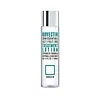What's inside
What's inside
 Key Ingredients
Key Ingredients

 Benefits
Benefits

 Concerns
Concerns

No concerns
 Ingredients Side-by-side
Ingredients Side-by-side

Water
Skin ConditioningGlycerin
HumectantMethyl Gluceth-20
HumectantPentylene Glycol
Skin ConditioningButylene Glycol
HumectantNiacinamide
SmoothingSorbitol
HumectantAdenosine
Skin ConditioningCaffeine
Skin ConditioningSodium Hyaluronate
HumectantAllantoin
Skin ConditioningPanthenol
Skin ConditioningArginine
MaskingHyaluronic Acid
HumectantGlycyrrhiza Glabra Root Extract
BleachingChamomilla Recutita Flower Extract
MaskingCentella Asiatica Extract
CleansingGlycine Soja Sprout Extract
EmollientCarica Papaya Fruit Extract
Skin Conditioning1,2-Hexanediol
Skin ConditioningSodium PCA
HumectantAcrylates/C10-30 Alkyl Acrylate Crosspolymer
Emulsion StabilisingHydroxyethylcellulose
Emulsion StabilisingTrehalose
HumectantSodium Polyglutamate
HumectantHydroxypropyltrimonium Hyaluronate
Hydrolyzed Hyaluronic Acid
HumectantSodium Acetylated Hyaluronate
HumectantPotassium Hyaluronate
Skin ConditioningSodium Hyaluronate Crosspolymer
HumectantDisodium EDTA
Water, Glycerin, Methyl Gluceth-20, Pentylene Glycol, Butylene Glycol, Niacinamide, Sorbitol, Adenosine, Caffeine, Sodium Hyaluronate, Allantoin, Panthenol, Arginine, Hyaluronic Acid, Glycyrrhiza Glabra Root Extract, Chamomilla Recutita Flower Extract, Centella Asiatica Extract, Glycine Soja Sprout Extract, Carica Papaya Fruit Extract, 1,2-Hexanediol, Sodium PCA, Acrylates/C10-30 Alkyl Acrylate Crosspolymer, Hydroxyethylcellulose, Trehalose, Sodium Polyglutamate, Hydroxypropyltrimonium Hyaluronate, Hydrolyzed Hyaluronic Acid, Sodium Acetylated Hyaluronate, Potassium Hyaluronate, Sodium Hyaluronate Crosspolymer, Disodium EDTA
Water
Skin ConditioningPEG-11 Methyl Ether Dimethicone
EmulsifyingButylene Glycol
HumectantGlycerin
HumectantFomes Officinalis Extract
Skin ProtectingCapryloyl Glycine
CleansingPolysorbate 20
EmulsifyingSodium Citrate
BufferingZinc Gluconate
Skin ConditioningSalicylic Acid
MaskingSodium Hydroxide
BufferingMannitol
HumectantSodium Metabisulfite
AntioxidantXylitol
HumectantRhamnose
HumectantPyridoxine Hcl
Skin ConditioningPropyl Gallate
AntioxidantPEG-40 Hydrogenated Castor Oil
EmulsifyingFructooligosaccharides
HumectantPhenoxyethanol
PreservativeParfum
MaskingWater, PEG-11 Methyl Ether Dimethicone, Butylene Glycol, Glycerin, Fomes Officinalis Extract, Capryloyl Glycine, Polysorbate 20, Sodium Citrate, Zinc Gluconate, Salicylic Acid, Sodium Hydroxide, Mannitol, Sodium Metabisulfite, Xylitol, Rhamnose, Pyridoxine Hcl, Propyl Gallate, PEG-40 Hydrogenated Castor Oil, Fructooligosaccharides, Phenoxyethanol, Parfum
 Reviews
Reviews

Ingredients Explained
These ingredients are found in both products.
Ingredients higher up in an ingredient list are typically present in a larger amount.
Butylene Glycol (or BG) is used within cosmetic products for a few different reasons:
Overall, Butylene Glycol is a safe and well-rounded ingredient that works well with other ingredients.
Though this ingredient works well with most skin types, some people with sensitive skin may experience a reaction such as allergic rashes, closed comedones, or itchiness.
Learn more about Butylene GlycolGlycerin is already naturally found in your skin. It helps moisturize and protect your skin.
A study from 2016 found glycerin to be more effective as a humectant than AHAs and hyaluronic acid.
As a humectant, it helps the skin stay hydrated by pulling moisture to your skin. The low molecular weight of glycerin allows it to pull moisture into the deeper layers of your skin.
Hydrated skin improves your skin barrier; Your skin barrier helps protect against irritants and bacteria.
Glycerin has also been found to have antimicrobial and antiviral properties. Due to these properties, glycerin is often used in wound and burn treatments.
In cosmetics, glycerin is usually derived from plants such as soybean or palm. However, it can also be sourced from animals, such as tallow or animal fat.
This ingredient is organic, colorless, odorless, and non-toxic.
Glycerin is the name for this ingredient in American English. British English uses Glycerol/Glycerine.
Learn more about GlycerinWater. It's the most common cosmetic ingredient of all. You'll usually see it at the top of ingredient lists, meaning that it makes up the largest part of the product.
So why is it so popular? Water most often acts as a solvent - this means that it helps dissolve other ingredients into the formulation.
You'll also recognize water as that liquid we all need to stay alive. If you see this, drink a glass of water. Stay hydrated!
Learn more about Water